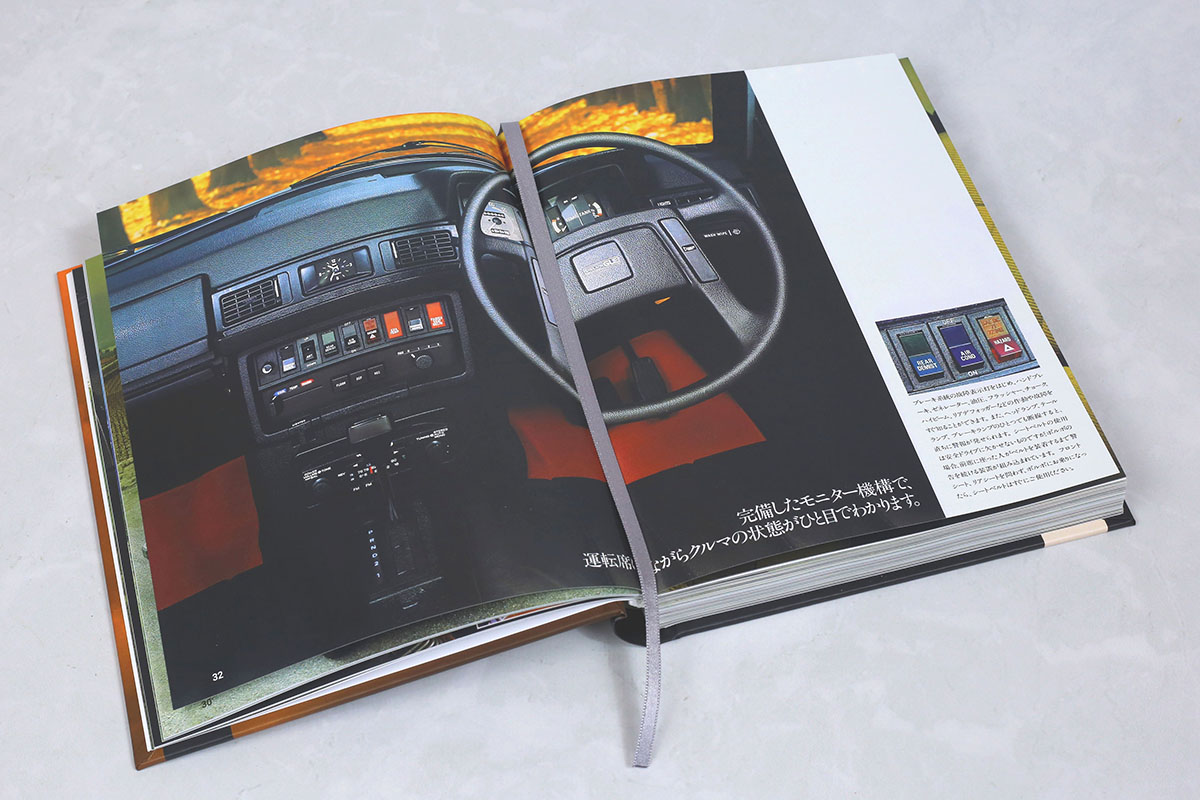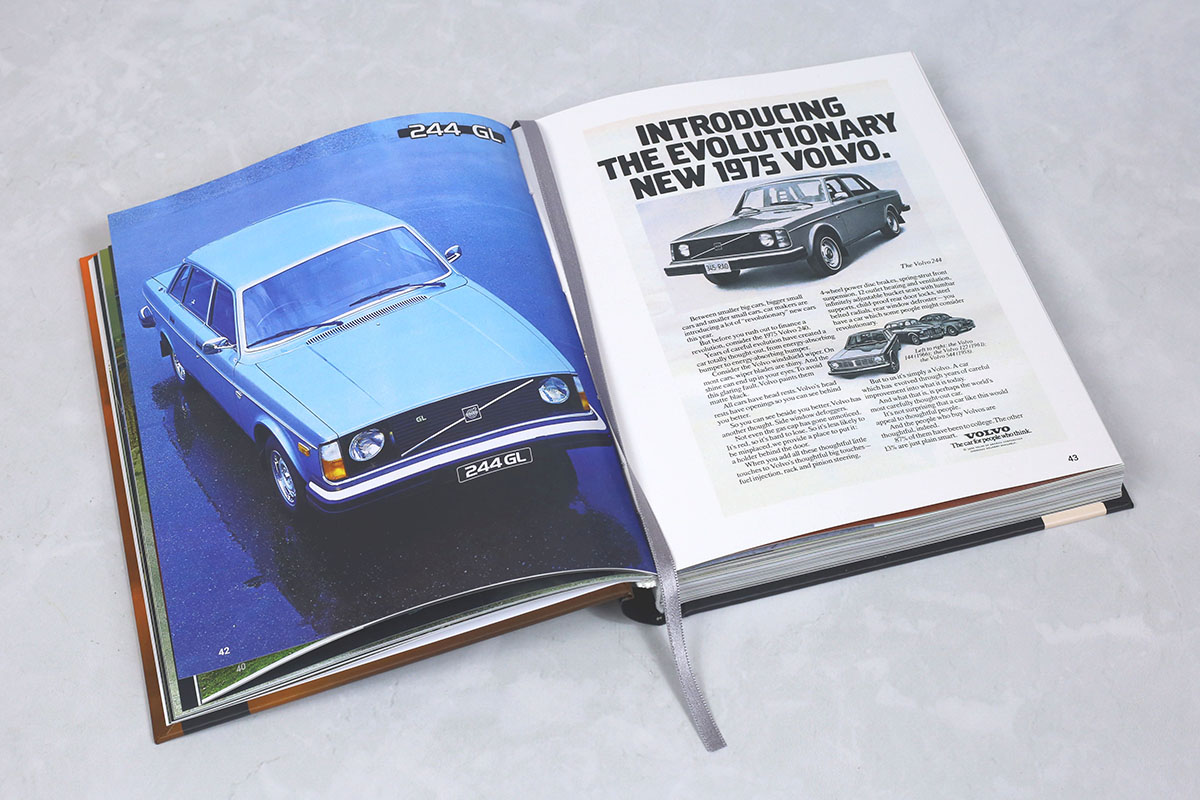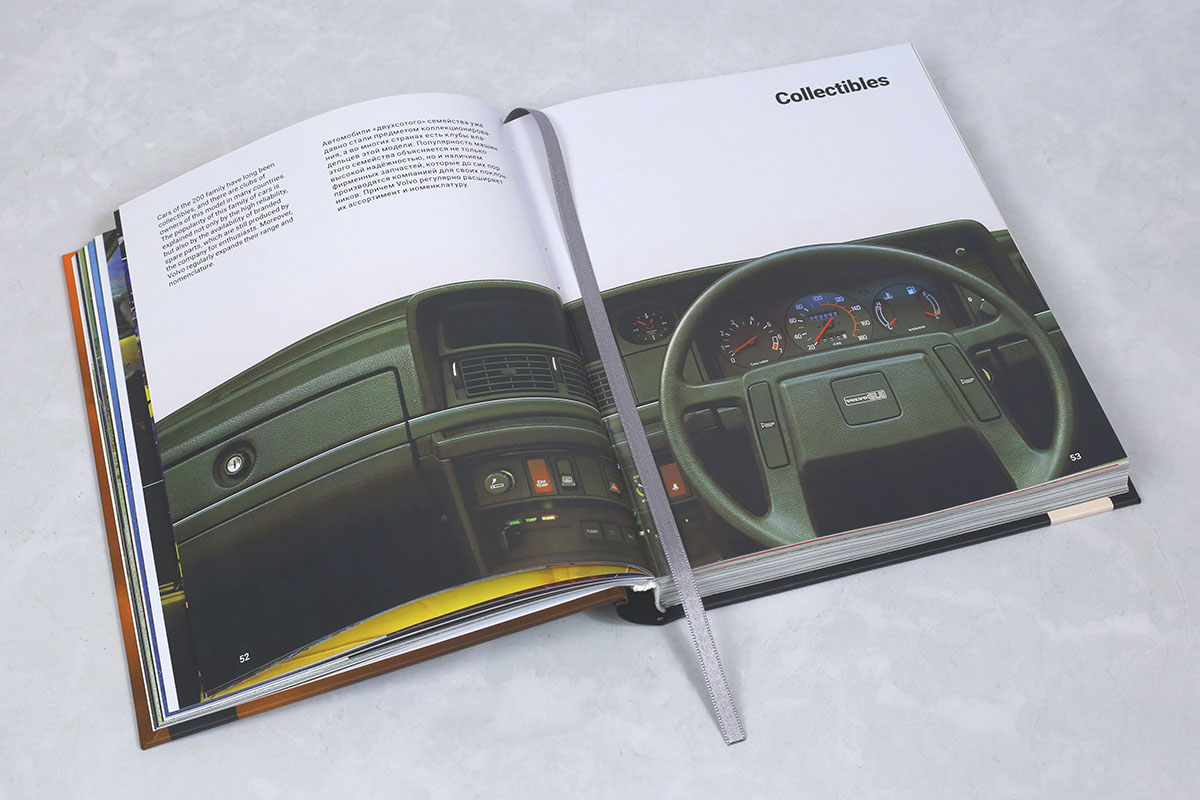Description
Volvo 240 & 260 Series Hardcover book (fragment of the text)
In August 1974, Volvo presented the new 200 family. The new model was a further development of the popular 140 model, featuring a number of innovative technical solutions.
It was greatly influenced by the conceptual experimental Volvo VESC of 1972, which focused mainly on safety. For example, the large bumpers were one of the concept’s distinctive features, which appeared on the 200 family in a modified form.
They increased the length of the Volvo 244 sedan by 130 mm compared to its predecessor. The new model also had a new front suspension with McPherson struts and rack-and-pinion steering.
An interesting detail of the interior was the original lattice headrests. Initially, two gasoline 4-cylinder engines were offered for the model, but a version of the Volvo 264 was introduced in the fall of 1974 that had a 2.7-liter 140-hp V6 engine developed jointly by Peugeot, Renault, and Volvo.
Interestingly, along with these car brands’ models, this engine was installed on the DeLorean DMC-12 sports car, known from the movie “Back to the Future.”
Later, a diesel engine developed with Volkswagen was proposed for the family. In 1981, a 155-hp version of the 244 Turbo was released, but the real sensation was the debut of the world’s first station wagon with a gasoline turbo engine, the Volvo 245 Turbo, which received the unofficial title of “the fastest production station wagon” in the world.
The new family of cars had a high level of active and passive safety. Crash tests conducted by the American organization NHTSA showed that the Volvo 244 provided better passenger protection compared to competitors.
The test results were the basis for forming U.S. safety legislation for all cars sold on the local market. In addition to being highly praised by NHTSA, Volvo received the Don Safety Trophy in the UK for its innovations and contribution to improving safety.
For four consecutive years from 1976 to 1980, the Volvo 245 station wagon was recognized as the safest car in the United States by the Insurance Institute for Road Safety.
Another important area in which Volvo made impressive progress was environmental protection. In 1976, Volvo was the first automaker in the world to install the lambda probe on production cars.
It helped to reduce the level of harmful emissions into the atmosphere by more than 90%. For its contribution to the environment, Volvo was recognized by the administration of U.S. President Jimmy Carter. In 1977, Volvo received the American National Environmental Industry Award, and in 1978 was named the “cleanest car” by the California Air Resources Board.
Buyers were offered a wide range of 200 family models, including 2- and 4-door sedans, station wagons, and a stylish 262C coupe, the production of which was organized in 1977 in Italy at the facilities of the Bertone body shop.
In addition, the company offered the 264TE sedan extended by 70 mm (Top Executive) and the 245T station wagon. Interestingly, a small batch of 264TE sedans was purchased to serve the top officials of the Communist Party of the GDR, including the country’s leader, Erich Honecker.
The big and heavy car with laconic forms was not disposed to active driving at all, so it got the reputation of a “boring” car. To debunk this myth, Volvo took part in circuit racing in the mid-1980s.
1985 was a landmark year for the company, when Thomas Lindström and Gianfranco Brancatelli won the European Touring Car Championship (ETCC) with a 2-door Volvo 240 Turbo sedan.
The turbocharged engines played an important role in attracting the attention of speed lovers to the brand. With the 240/260, Volvo significantly expanded its production geography. In addition to the base company in Sweden, the 200 series was produced in Australia, Belgium, Indonesia, Italy, Canada, Malaysia, Singapore, and Thailand.
The family became the most widespread in the history of the brand — over 19 years, about 2.9 million cars were produced in different versions and modifications.
Read the continuation of Volvo 240 & 260 Series story in the book.
Other books about history of Volvo:













Reviews
There are no reviews yet.